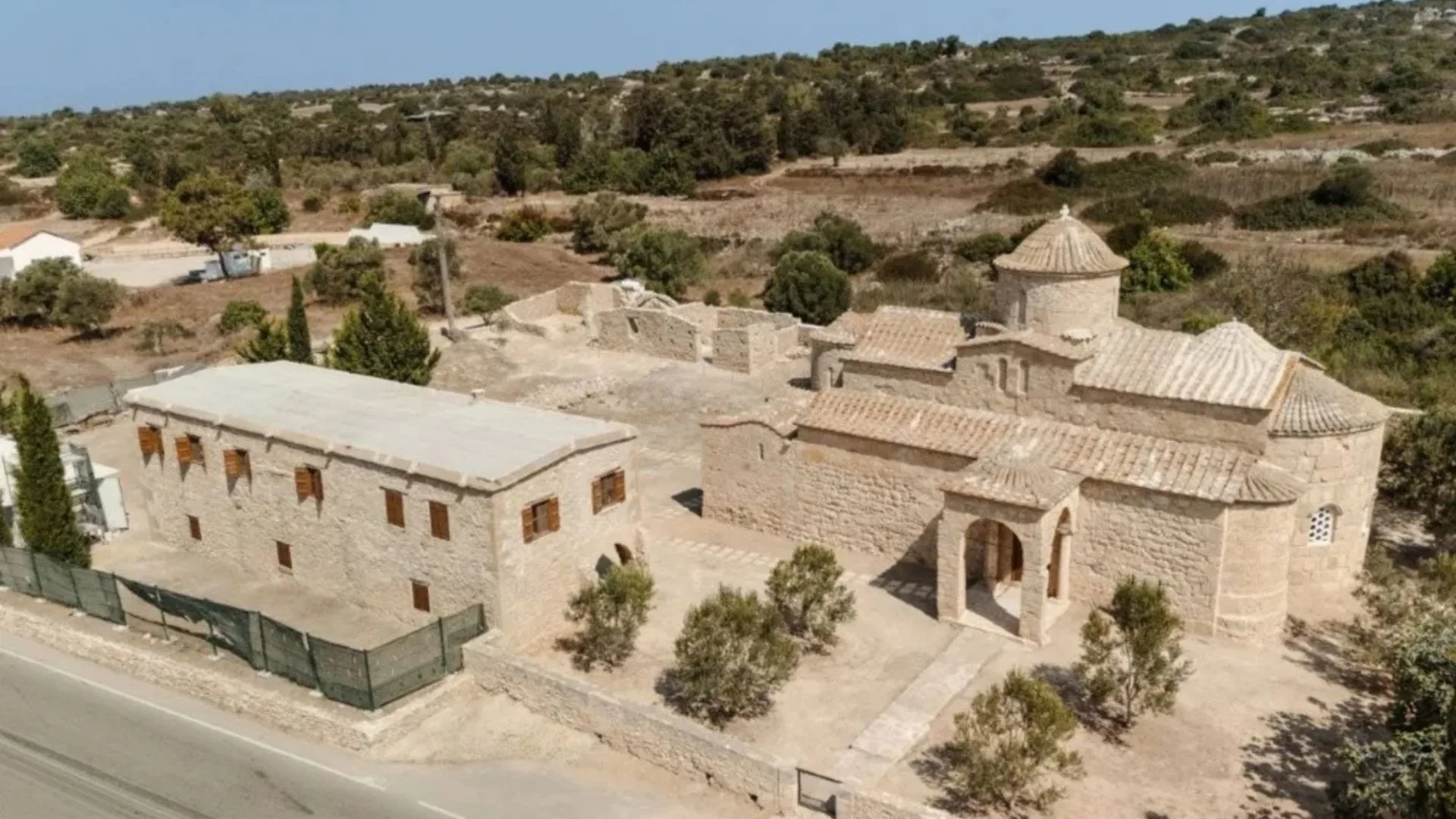The monastery and church of Panayia Kanakaria in the village of Lythrangomi, Karpasia, one of Cyprus’s most significant heritage sites, has now been fully restored, according to cyprus-mail.com.
The project was funded by the European Union and overseen by the United Nations Development Programme, with Greek Cypriot and Turkish Cypriot experts collaborating under the bicommunal committee on cultural heritage.
Greek Cypriot co-chair of the committee, Sotos Ktoris, told the Cyprus News Agency that “the restoration of Panayia Kanakaria is yet another tangible example of how cooperation between Greek Cypriots and Turkish Cypriots can produce concrete results with powerful symbolism.” He stressed that monuments across Cyprus, whether Christian or Muslim, embody the island’s enduring ties to its land and history.
“They remind us that Greek Cypriots, Turkish Cypriots, Maronites, Armenians and Latins shared the same geography for centuries, and that Cyprus’s monuments are irrefutable witnesses to the island’s multicultural heritage,” Ktoris added.
Panayia Kanakaria is considered a rare architectural landmark, containing elements from early Christian and Byzantine traditions. It stands on the ruins of a 5th-century wooden-roofed basilica. Of particular note is the semi-circular apse, originally home to the renowned 6th-century mosaic depicting the enthroned Virgin Mary, angels, and medallions of the Apostles.
The church evolved over centuries: rebuilt in the 8th century as a barrel-vaulted basilica, then again in the 12th century with the addition of a dome and new apse.
The apse mosaics were looted after 1975 and sold abroad, an event covered by the New York Times and other outlets. Following lengthy legal proceedings, they were repatriated to Cyprus and are now exhibited in the Byzantine Museum in Nicosia.
Source: cyprus-mail.com

